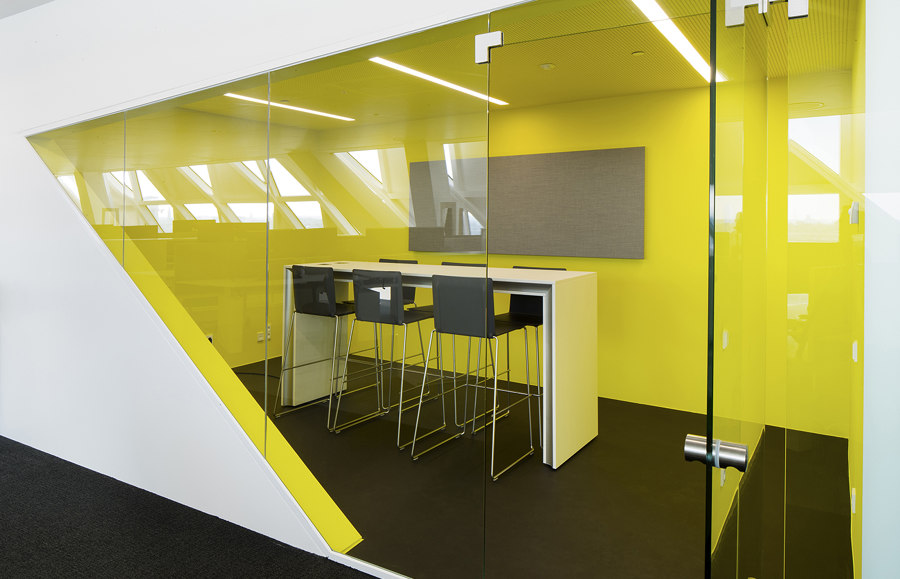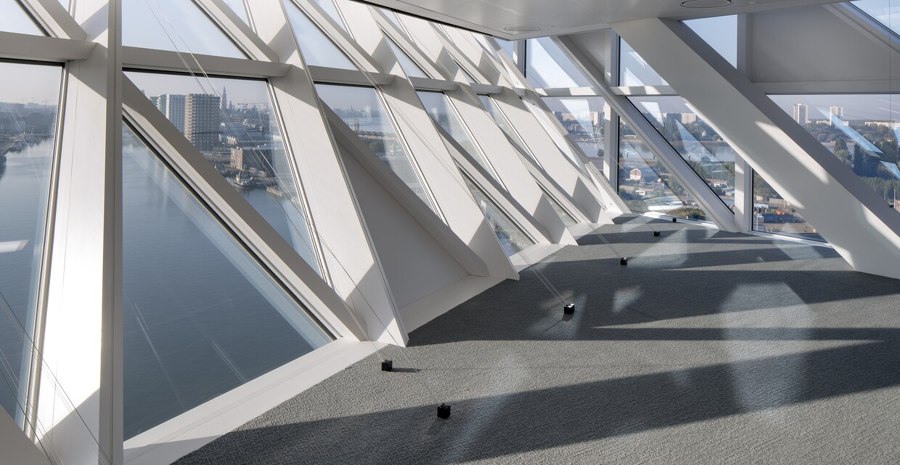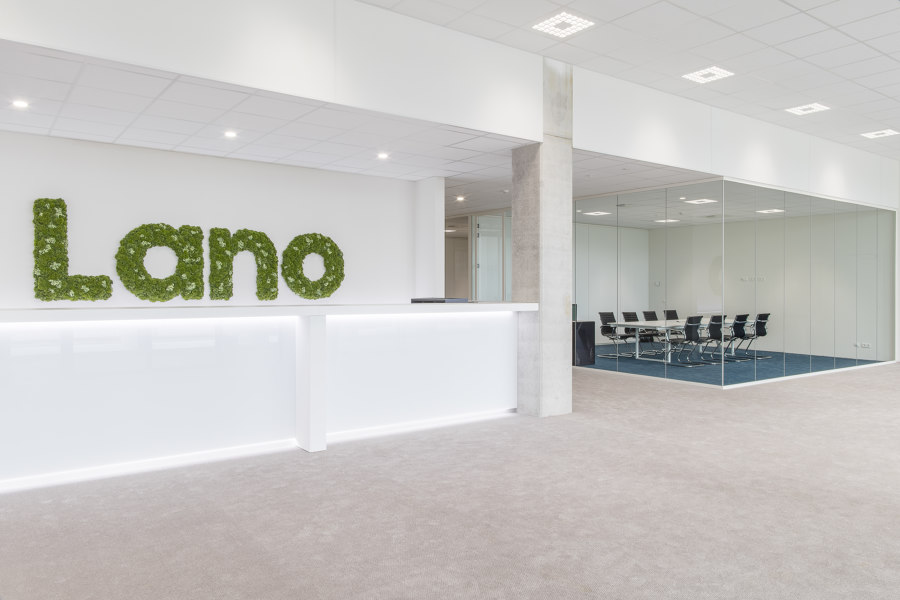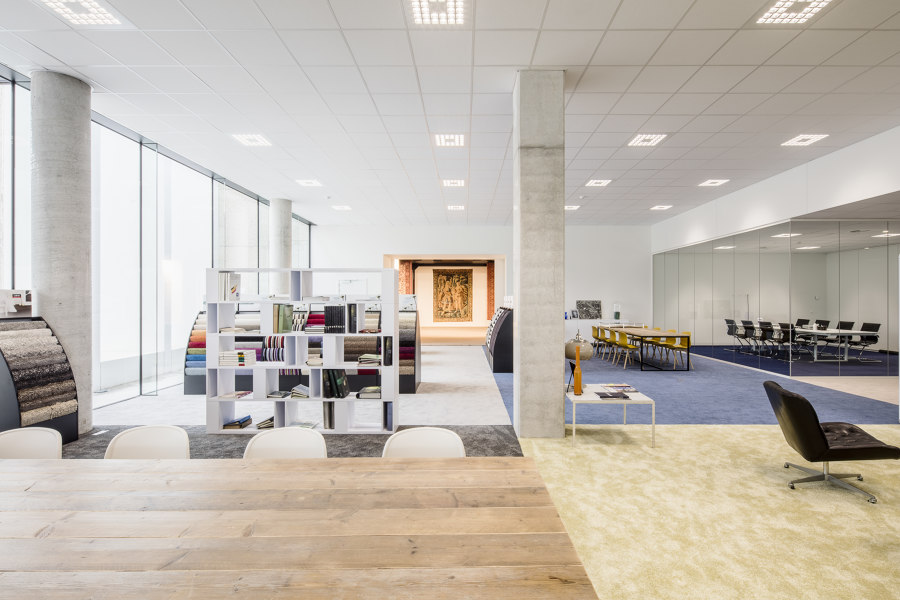PALMBERG Intelligence: Wellbeing in the Workplace
Brand story by Jeremy Myerson
Schönberg, Germany
28.10.21
The PALMBERG Workplace Intelligence Series explores the rapidly evolving landscape of work in terms of both user behaviour and office design. Sponsored by leading German office-furniture manufacturer PALMBERG, which has for decades developed products that respond to new research in work culture, it gives a platform to expert thinkers whose insight and commentary help shape the debate around work in the 21st century.
Port of Antwerp by Zaha Hadid, Belgium: office buildings are on the frontline of the public health campaign against Covid-19. Concept and realization FORUM OFFICE, Sint-Gillis-Waas, Belgium. Photos: Sarah Blee (Antwerp)

Port of Antwerp by Zaha Hadid, Belgium: office buildings are on the frontline of the public health campaign against Covid-19. Concept and realization FORUM OFFICE, Sint-Gillis-Waas, Belgium. Photos: Sarah Blee (Antwerp)
×Given that we are now emerging from the most serious global health crisis since the outbreak of Spanish flu in 1918, it should come as no surprise that employee wellbeing is at the top of the workplace agenda as people return to the office in the wake of the Covid-19 pandemic. A safer and healthier work environment is in everyone’s interests – and companies are generally keen to make the right changes to restore confidence in the office.
But what is surprising is how so much of the debate has been focused on the use of technology in the work environment to boost wellbeing, rather than the use of design. Biometric health checks in reception, facial recognition technology, touchless elevator controls, social distancing sensors, autonomous cleaning robots, voice-enabled devices, and remote wellness and engagement tools are just some of the innovative things that have been touted to create a better workplace experience in the 'new normal'.
Design principles are as important to employee wellbeing as tech solutions. Port of Antwerp, concept and realization FORUM OFFICE, Sint-Gillis-Waas, Belgium. Photos: Sarah Blee (Antwerp)

Design principles are as important to employee wellbeing as tech solutions. Port of Antwerp, concept and realization FORUM OFFICE, Sint-Gillis-Waas, Belgium. Photos: Sarah Blee (Antwerp)
×All of this is undoubtedly clever stuff, but it somewhat misses the point about the work environment, which is essentially a design construct, not a technological one. Smart tech can only be a complement or enhancement to the designed environment, which provides health-inducing properties in its own right through the use of form, colour, light, furniture, acoustics, ergonomics, materials, dimensions and amenities. Office design can also communicate human-centric messages around safety, wellness and respect through its look and feel, which is beneficial to employee wellbeing.
A safer and healthier work environment is in everyone’s interests – and companies are generally keen to make the right changes to restore confidence in the office
The concept of wellbeing in the workplace is not easy to pin down. A useful definition from the New Economics Foundation describes wellbeing as the 'equilibrium' between the psychological, physical and social resources that a person brings to work, and the external circumstances and challenges they face. Wellbeing is about creating a sense of personal health, contentment and thriving, in the knowledge that any workplace problems can be addressed in a supportive environment.
Jeremy Myerson is director of Worktech Academy and professor emeritus in design at the Royal College of Art, London

Jeremy Myerson is director of Worktech Academy and professor emeritus in design at the Royal College of Art, London
×Designing for wellbeing is not an exact science, but scientific evidence in the field of environmental psychology nevertheless provides a useful framework for action. Here are some important design factors derived from recent academic research: natural materials, natural light and soundscapes of nature; circulation routes that increase random encounters; just enough visual complexity in the space (but not too much); better air quality; opportunities to exercise; acoustic comfort and privacy; access to green views and outdoor space; and plants, plants and more plants. Biophilic design has emerged from the pandemic in pole position, as studies have shown it can reduce stress, enhance creativity and clarity of thought, and improve our wellbeing.
Coca Cola Berlin, Germany: giving individuals a ’sense of control’ is important to workplace wellbeing. Concept and planning pro m2 GmbH, Grevenbroich. Photos: Werner Huthmacher, Berlin

Coca Cola Berlin, Germany: giving individuals a ’sense of control’ is important to workplace wellbeing. Concept and planning pro m2 GmbH, Grevenbroich. Photos: Werner Huthmacher, Berlin
×One of the most important influences on individual wellbeing is having a 'sense of control' over the environment – this can be achieved through providing adaptable spaces, programmable lighting, mobile furniture, or even a co-design process for staff members. Workers need time and space to cognitively 'reboot' during the working day, so quiet contemplation spaces are valuable for mental rest and recovery.
Wellbeing is about creating a sense of personal health, contentment and thriving, in the knowledge that any workplace problems can be addressed in a supportive environment
Showing employees that they are valued and their needs taken into account is also a critical aspect of 'control'. PALMBERG office projects for clients as diverse as Coca Cola, Lano Carpets and the Port of Antwerp reflect a clarity of corporate purpose and identity through design that supports this collegiate approach.
Lano Carpet, Harelbeke, Belgium: a strong sense of corporate purpose and identity supports wellbeing. Concept and realization FORUM OFFICE, Sint-Gillis-Waas, Belgium. Photos: dtonic, Meulebeke (Belgium)

Lano Carpet, Harelbeke, Belgium: a strong sense of corporate purpose and identity supports wellbeing. Concept and realization FORUM OFFICE, Sint-Gillis-Waas, Belgium. Photos: dtonic, Meulebeke (Belgium)
×Of course, we need seamless connectivity in the workplace and we know that touchless tech solutions can help reduce anxiety around the office return. But let’s not be fooled that technology holds all the cards. A well designed, natural, calming, purposeful, adaptable and health-inducing office environment can do wonders for employee wellbeing – before you’ve even logged into the wi-fi.
© Architonic













